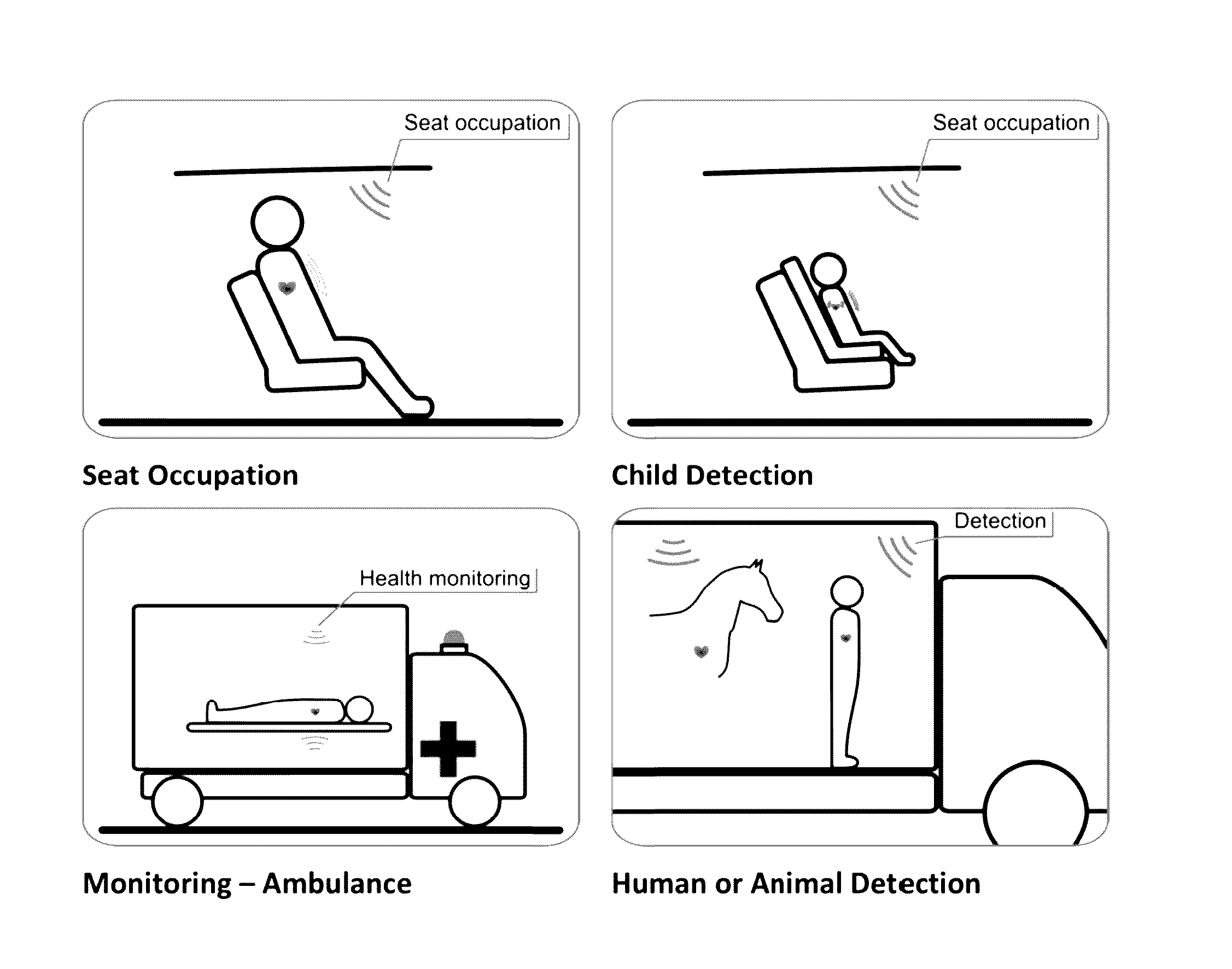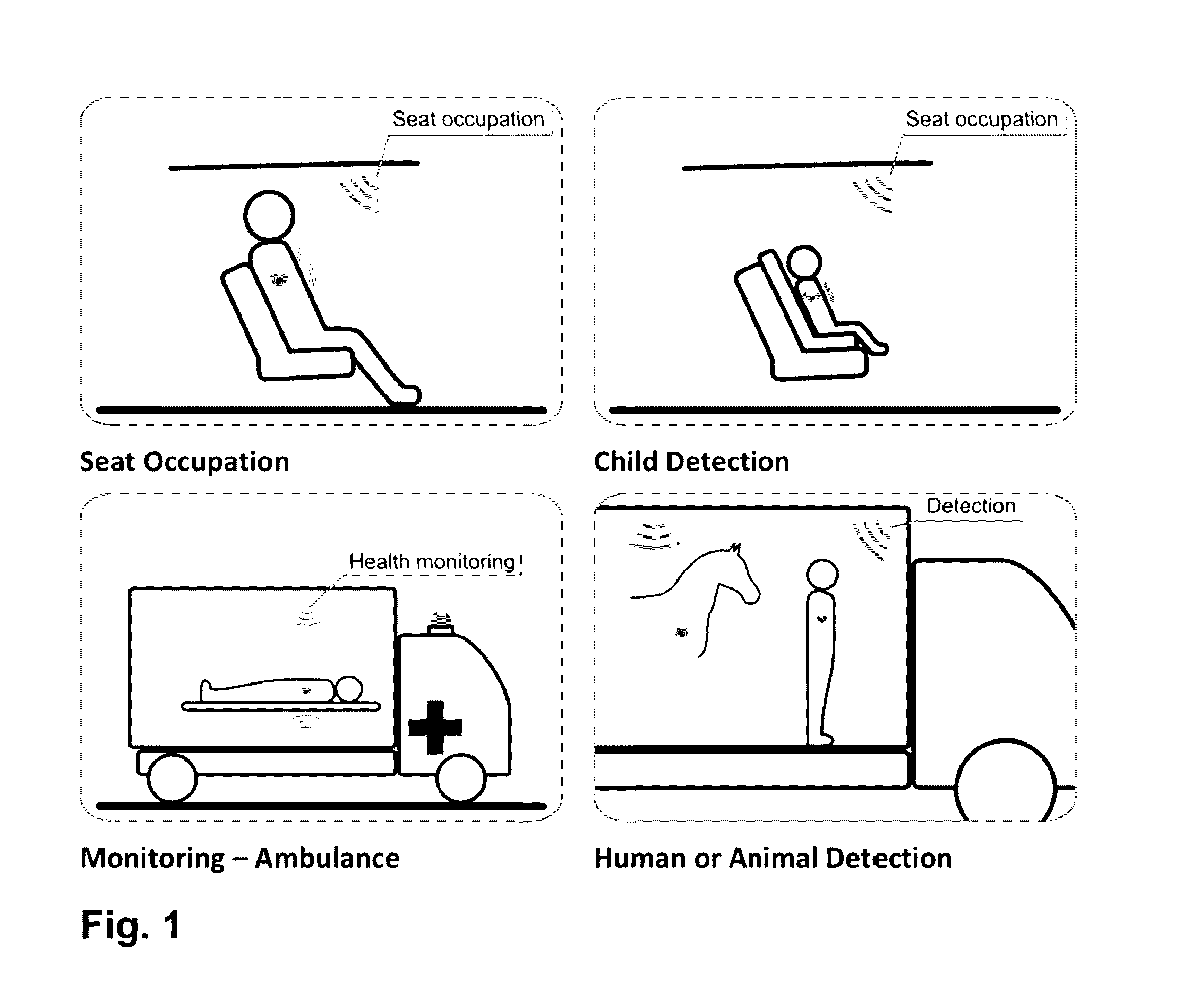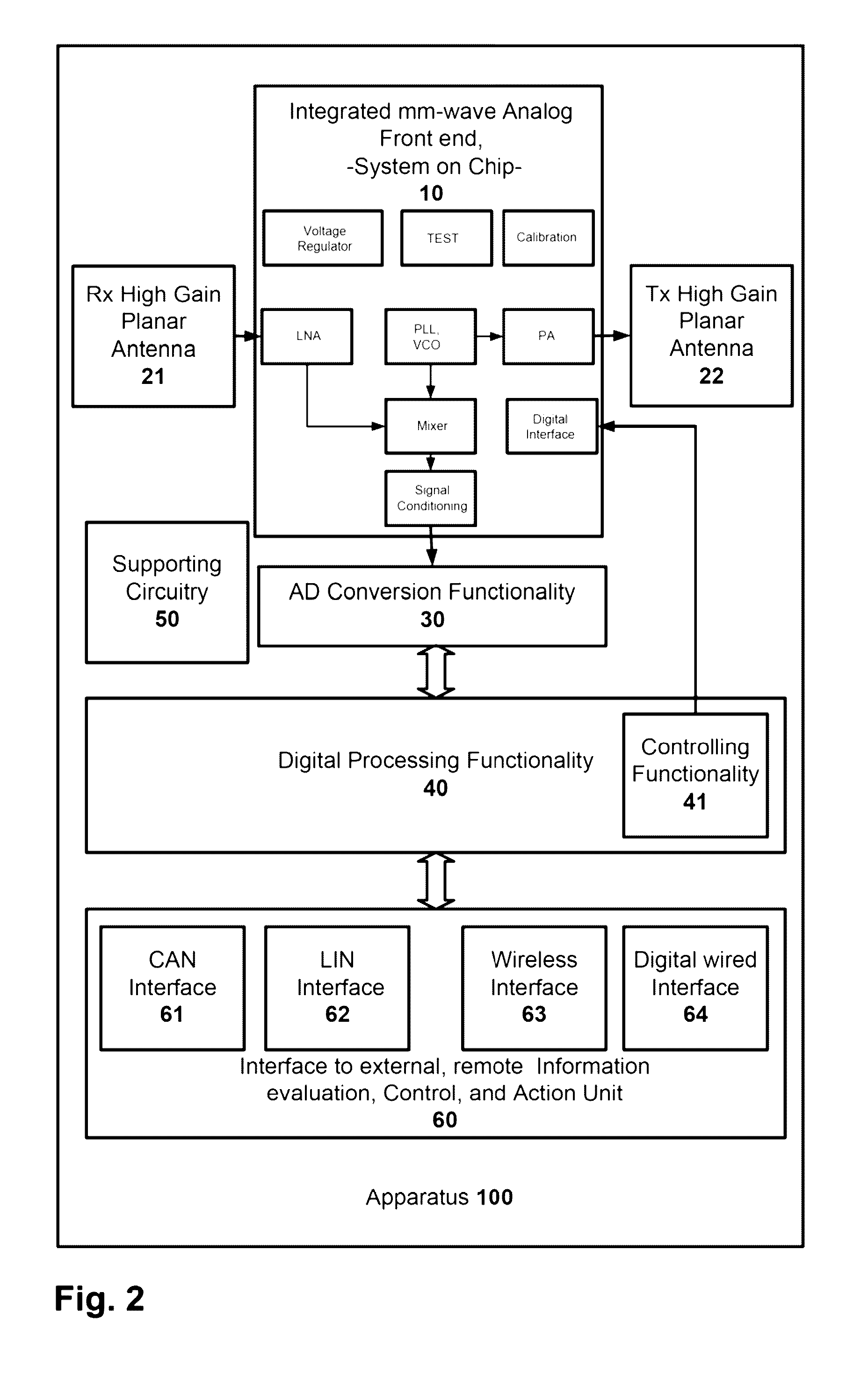Millimetre-wave seat occupation radar sensor
a radar sensor and millimetre wave technology, applied in the direction of instruments, pedestrian/occupant safety arrangements, vehicular safety arrangements, etc., can solve the problems of increasing the system handling, difficult to integrate ultrasound hardware with electronics, and difficult to propose a system, etc., to achieve the effect of improving safety
- Summary
- Abstract
- Description
- Claims
- Application Information
AI Technical Summary
Benefits of technology
Problems solved by technology
Method used
Image
Examples
Embodiment Construction
[0065]Apparatus 100 is preferably integrated in the vehicle, having Line-of-Sight (LOS), i.e. no obstacles, between the system and the human body, as shown in the FIG. 1. Some application scenarios are also illustrated in FIG. 1. Due to advantageously proposed mm-wave radar application, the size of the high-gain Antenna System for RX 21 and for TX 22 is small enough to allow practical use of the apparatus in the vehicle cabin while maintaining high-gain antenna features. Taking into account proposed 60 GHz ISM band operation, or alternatively 77-79 GHz operation, and 4×4 antenna elements for 21 and 22, the approximate size of the device may be less than 4×2×1 cm, which would inherently allow practical use in vehicle cabins.
[0066]The crucial block of the proposed apparatus 100 is the Integrated mm-wave front end, -System on Chip- 10. It contains the complete RF functionality, and includes power amplifier functionality attached to the antenna system 22, low noise amplifier attached to...
PUM
 Login to View More
Login to View More Abstract
Description
Claims
Application Information
 Login to View More
Login to View More - R&D
- Intellectual Property
- Life Sciences
- Materials
- Tech Scout
- Unparalleled Data Quality
- Higher Quality Content
- 60% Fewer Hallucinations
Browse by: Latest US Patents, China's latest patents, Technical Efficacy Thesaurus, Application Domain, Technology Topic, Popular Technical Reports.
© 2025 PatSnap. All rights reserved.Legal|Privacy policy|Modern Slavery Act Transparency Statement|Sitemap|About US| Contact US: help@patsnap.com



